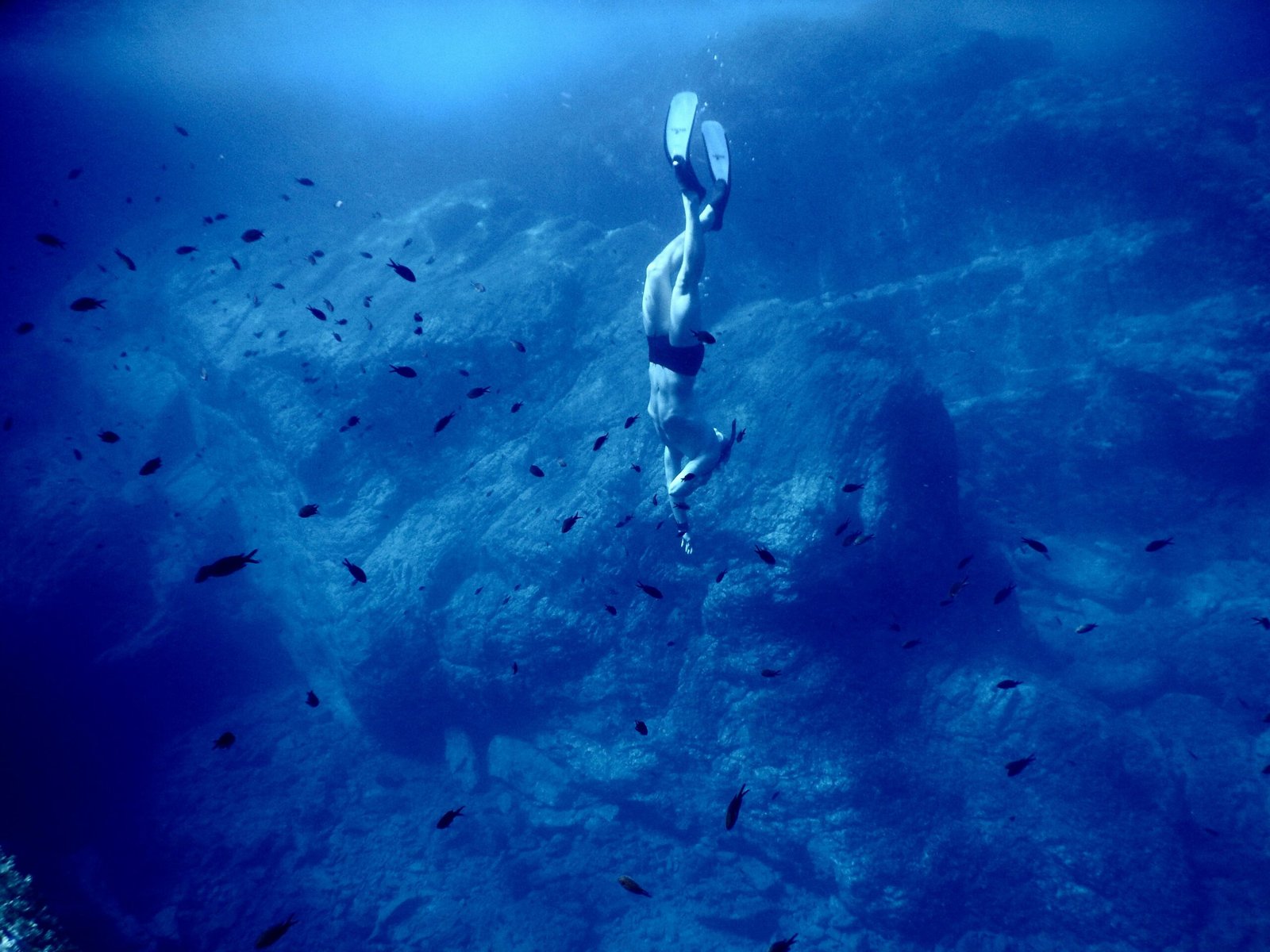Introduction to Remote Places
Remote places are defined by their significant distance from populated areas, making them exceptionally isolated and often hard to reach. These locations may range from desolate deserts to towering mountain ranges and untouched islands. The allure of exploring isolated destinations stems from their unique landscapes, rich biodiversity, and the profound sense of adventure they offer. For many, the draw to remote locations is not only the promise of stunning vistas but also the opportunity for introspection and escape from the hustle and bustle of modern life.
The beauty of these secluded areas lies in their unspoiled nature. Vast expanses of land untouched by human activity often reveal ecosystems thriving in their natural states. From the serene beauty of the Arctic tundra to the tropical seclusion of the South Pacific islands, remote places provide an unparalleled opportunity to connect with nature. Moreover, these locations often host rare wildlife that has adapted to their environments, offering a unique perspective on biodiversity that is increasingly difficult to find in urban areas.
However, the charm of remote places comes with distinct challenges. Accessibility can be a significant barrier, with many locations requiring extensive travel and preparation. Additionally, the isolation can present issues such as limited resources, harsh weather conditions, and the absence of modern amenities. Travelers must be well-prepared to encounter the unpredictable elements of nature while also respecting the delicate ecosystems they explore.
In experiencing remote places, adventurers break free from their daily routines and immerse themselves in the wonders of our planet. These hidden gems, rich in both beauty and challenges, invite individuals to engage in an authentic exploration of the world, fostering a deeper appreciation for the environment and its preservation.
The Importance of Isolation
Isolation often plays a crucial role in the cultural and ecological dynamics of remote locations. These secluded areas, far removed from the hustle and bustle of modern society, have been largely preserved from the rapid advancement of technology and urbanization. This preservation is significant for maintaining diverse local traditions and customs that have been cultivated over generations. Many of these communities have developed unique lifestyles, art forms, and social structures that remain intact, offering a living repository of cultural heritage. As such, isolated regions become vital for anthropological studies, shedding light on human adaptations and interactions with their surroundings.
Ecologically, the significance of remote areas is profound. Often, these regions serve as sanctuaries for wildlife and plant species that are endangered or at risk of extinction in more accessible environments. The limited human interference allows for natural processes to thrive, contributing to the protection of biodiversity. The ecosystems found in these locations can be incredibly rich and varied, hosting a multitude of species, some of which remain unstudied or undocumented by the scientific community. Researchers have long recognized the potential of these isolated habitats for advancing ecological knowledge and conservation efforts.
Furthermore, these locations often act as natural laboratories for environmental studies, where scientists can observe the effects of climate change, habitat loss, and other human-related impacts on a much smaller scale. By understanding these unique environments, conservationists and policymakers can create informed strategies aimed at preserving threatened ecosystems worldwide. In this regard, the importance of isolation cannot be overstated; the distinct nature of these hidden gems not only enriches our cultural tapestry but also safeguards our planet’s ecological heritage for future generations to explore and appreciate.
The Most Isolated Habitats on Earth
The world’s remote habitats offer unique biological and ecological features, often characterized by their inaccessibility and isolation. One of the most remarkable examples is Tristan da Cunha, an archipelago located in the South Atlantic Ocean. Known as the world’s most isolated inhabited group of islands, Tristan da Cunha is approximately 2,400 kilometers from the nearest inhabited land, making it a captivating study of human adaptation and resilience. The island is characterized by its volcanic landscape, steep cliffs, and a unique climate that supports a limited yet distinctive array of flora and fauna. The isolation has led to a fascinating community that relies heavily on fishing, agriculture, and the occasional supply ship for essential goods.
Another notable isolated habitat is Socotra Island, situated in the Arabian Sea. This island, part of Yemen, is renowned for its extraordinary biodiversity, housing around 37% of its plant life found nowhere else on the planet. Socotra’s unique geological features and climate have contributed to the development of its unique ecosystems. The island experiences a subtropical desert climate, resulting in a lack of surface water during certain seasons, which alongside its geographical isolation has shaped a highly adaptive flora, such as the iconic Dragon’s Blood tree. Socotra is often referred to as the “Galápagos of the Indian Ocean” due to its high degree of endemism and unique biological attributes.
Other isolated habitats include the remote regions of the Amazon rainforest and the Arctic tundra, each presenting their distinct climatic challenges and ecosystems. For instance, the Amazon rainforest, despite being accessible via rivers, remains largely underexplored and home to numerous uncontacted tribes, contributing to its mystique. Similarly, the Arctic tundra, with its frigid temperatures and treacherous terrain, harbors unique wildlife adapted to extreme conditions. These locations illustrate the incredible resilience of life in the face of isolation, resulting in habitats that are both delicate and incredibly rich in biodiversity.
Unique Communities and Their Ways of Life
In the vast expanses of the world’s most isolated regions, unique communities have formed, each with distinct traditions and lifestyles, adapted to their challenging environments. These isolated groups, often residing in harsh climates or remote terrains, demonstrate remarkable resilience and resourcefulness. Their social structures are often tightly knit, fostering strong familial bonds and communal support systems that are vital for survival.
For example, the Inuit communities of the Arctic have adapted to extreme cold, relying on traditional hunting, fishing, and gathering practices. Their cultural heritage is rich with oral traditions, storytelling, and art, which serve not only as a means of preserving history but also as a way to teach younger generations about their environment and survival skills. The close-knit nature of their society is essential; individuals often depend on collective efforts for hunting and sharing food resources, fostering a deep sense of interdependence.
In contrast, the communities inhabiting the Amazon rainforest, such as the Yanomami, have developed their unique agricultural practices, relying on the forest’s intricate ecosystem. Their knowledge of medicinal plants and sustainable farming contrasts sharply with modern agricultural methods. Social structures here emphasize egalitarian principles, with decisions typically made through consensus rather than imposed hierarchically. They possess an intimate relationship with their environment, emphasizing sustainability and respect for the land, which starkly contrasts with the burgeoning external pressures from deforestation and industrialization.
Moreover, in the South Pacific, remote island communities have cultivated lifestyles centered around fishing and agriculture. These societies often maintain rich cultural heritages, characterized by vibrant festivals, dances, and artisanal crafts. They face unique challenges such as rising sea levels and climate change, prompting innovative adaptations and a commitment to resilience. Through shared traditions and economic activities, these communities continue to thrive, exemplifying the strength found in isolation.
Transportation and Accessibility Challenges
Reaching the world’s most remote places requires a multi-faceted approach to transportation and logistics. Due to their isolation, these hidden gems often lack direct access to conventional transportation infrastructures such as highways and railroads. As a result, travelers must rely on a combination of air, water, and sometimes even animal transportation to traverse the daunting distances that separate them from more populated regions.
Air travel is frequently the primary means of access for remote locations. Small charter flights or helicopters can cover vast expanses of land, overcoming the challenges posed by rugged terrains. In many cases, this mode of transport is the only feasible option to arrive at secluded destinations. However, weather conditions and the limited availability of services can lead to delays or cancellations, further complicating travel plans. Additionally, such low-volume flights often come at a steep premium, effectively increasing the cost of accessing these locations.
For destinations surrounded by water, boats or ferries may serve as the main channels for transportation. While navigating these waterways can be scenic, it also presents its own set of challenges. High seas can disrupt travel, and the efficiency of water transport can greatly fluctuate depending on the season. The logistics of carrying goods to these regions are similarly complicated. Supplies, from food to construction materials, must often be delivered via sealed containers or barges, with reliance on favorable weather conditions playing a crucial role in maintaining regular shipments.
Moreover, some of the most inaccessible places still see intrepid travelers opting for overland travel, often through treacherous routes requiring specialized vehicles. These journeys can involve a combination of personal determination, extensive planning, and the resourcefulness to adapt to unexpected circumstances. Stories of resilience and ingenuity emerge from these adventures, showcasing the lengths to which some will go to experience the unparalleled beauty of the world’s most remote locales.
Survival Strategies of Remote Inhabitants
The inhabitants of the world’s most remote places have developed unique survival strategies that enable them to thrive in isolation. These strategies are deeply rooted in their environments and cultural practices, facilitating their adaptation to harsh conditions. The primary source of sustenance varies significantly across different regions, depending largely on geographical features and available resources. For instance, communities near coastal areas often rely on fishing, while those in mountainous terrains may depend on hunting and gathering wild plants.
A critical aspect of survival in these isolated communities is their approach to shelter. The type of dwelling is often dictated by the climate and available materials. For example, Inuit communities traditionally construct igloos from snow, which provide exceptional insulation against extreme cold. Meanwhile, tropical island inhabitants may build stilt houses that protect them from rising sea levels and flooding. Such intelligent architectural designs reflect the ingenuity of remote cultures in maximizing their chances of survival amidst environmental challenges.
Energy solutions are another vital component of life in remote areas. Many communities utilize sustainable energy sources such as solar panels, wind turbines, or hydroelectric systems to cater to their energy needs. This not only supports everyday tasks but also reduces vulnerability to external energy crises. In some cases, inhabitants rely on traditional practices, such as firewood or biomass, which are more sustainable in regions with abundant natural resources.
Preparation for external emergencies and natural disasters is crucial for these communities. Many have developed communal strategies and practices for disaster preparedness, such as early warning systems and resource stockpiling, which enhance their resilience. These survival strategies underscore the remarkable adaptability and resourcefulness of people living in some of the most isolated and challenging environments on Earth.
Biodiversity and Wildlife in Remote Places
Remote places around the globe, often characterized by their geographical seclusion, harbor an array of unique biodiversity that cannot be found elsewhere. These isolated ecosystems thrive due to limited human intervention, resulting in an extraordinary spectrum of flora and fauna. The natural barriers inherent in such regions serve as protective shields, fostering the evolution of species that are highly specialized and endemic.
For instance, the Galápagos Islands, known for their remarkable wildlife, are home to species such as the Galápagos tortoise and the flightless cormorant, which have adapted specifically to their environment. Similarly, the deep rainforests of the Amazon host countless species, many of which remain unidentified, yet they play crucial roles in their ecosystems. The isolation of these areas has led to evolutionary pathways that create biological diversity, making conservative efforts increasingly essential to protect these unique species from the threats posed by climate change and habitat destruction.
Conservation initiatives in remote locations often face significant challenges due to their inaccessibility. Nonetheless, these efforts are vital for preserving their delicate ecosystems. Organizations and researchers engage in biodiversity assessments, habitat restorations, and local engagement strategies that promote sustainable practices. For example, in Madagascar, conservationists are working tirelessly to protect the island’s rich biodiversity, which includes numerous lemur species found nowhere else on Earth. Such initiatives help raise awareness and foster a commitment to preserving the unique wildlife found in these remote places.
The connection between isolation and biodiversity is a fascinating aspect of our planet’s natural world. The variety of life in these hidden gems highlights the importance of maintaining and conserving ecosystems that would otherwise be at risk due to outside influences. Understanding and appreciating this biodiversity can inform future conservation strategies and inspire a global commitment to protecting these fragile habitats.
Conservation Efforts and Threats
Remote places around the world, despite their beauty and ecological significance, face considerable conservation challenges. Human impact remains one of the foremost threats to these isolated regions. Activities such as mining, deforestation, and tourism can lead to habitat destruction and biodiversity loss. Even in the most secluded areas, the encroachment of human activity can have devastating effects on wildlife populations and ecosystems.
Climate change poses additional risks to remote environments. Rising temperatures, shifting weather patterns, and increased frequency of extreme weather events jeopardize the stability of these ecosystems. For instance, the melting of glaciers in polar regions not only threatens species reliant on cold habitats but also contributes to rising sea levels that affect coastlines globally. The outcomes of climate change are particularly concerning in isolated areas, where ecosystems often exhibit limited resilience to disturbances.
In response to these threats, a plethora of conservation efforts are underway, spearheaded by local communities, non-governmental organizations, and international bodies. These initiatives are focused on safeguarding biodiversity, promoting sustainable practices, and restoring damaged habitats. For example, many organizations engage in habitat restoration projects that aim to restore ecosystems to their natural state, often involving local communities in the process. Furthermore, awareness campaigns are crucial in educating the public about the importance of conserving remote regions and advocating for their protection.
However, successful conservation requires collaboration among stakeholders at all levels. Policies aimed at protecting these vulnerable areas must be developed within a framework that balances human needs with environmental preservation. By fostering a greater understanding of the significance of remote places and strengthening conservation measures, we can work towards ensuring their sustainability for generations to come.
Conclusion: The Allure of the Remote
The world’s most remote places captivate the imagination with their allure and mystique. From the breathtaking landscapes of Antarctica to the untouched beauty of the Pacific Islands, these hidden gems offer a stark contrast to bustling urban environments. Their isolation not only provides a sense of tranquility but also a unique opportunity for adventure and exploration. Travelers seeking solace often find themselves drawn to these distant locales, where nature reigns supreme and human presence is minimal.
These remote locations serve as essential sanctuaries for biodiversity, preserving unique ecosystems that are often at risk due to climate change and human encroachment. The importance of safeguarding these fragile habitats cannot be overstated; each remote destination holds distinct flora and fauna that may not exist elsewhere. By prioritizing conservation efforts, we ensure that future generations will have the chance to study and appreciate the complex relationships within these ecosystems, enhancing our understanding of global diversity.
Moreover, the resilience of human life in these isolated regions reflects a rich tapestry of cultural heritage. Indigenous communities often inhabit these areas, maintaining practices and traditions that have survived for centuries. This resilience underscores the significance of respecting and preserving their ways of life, contributing to a broader understanding of human adaptability in the face of environmental challenges. As we explore these remote places, it is crucial to approach them with respect, fostering sustainable tourism that minimizes impacts on both nature and local cultures.
In conclusion, the allure of remote destinations lies not only in their stunning beauty but also in their role as vital ecosystems and cultural reservoirs. As we continue to explore these hidden gems, we must remain committed to their preservation, ensuring that they will inspire and educate generations to come.



